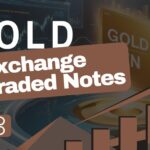Open up new investment options beyond normal stocks and real estate.
In this article, we’ll walk you through the big role gold plays in commodity index funds. We’ll look at the makeup of major indexes and how they did in the past to help you get how gold amounts can change returns and risks.
By checking out alternative investments, you can make informed choices for a stable financial future.
Let’s uncover the potential of gold together.
Understanding Commodity Index Composition and Performance
Commodity index funds can provide you wide exposure to many different commodities, including energy, agriculture, metals, and precious metals like gold.
The exact makeup and performance of these indexes can change a lot based on the commodities included, their weights within the index, and the methods used to manage the index over time.
As an investor, it’s important to understand these differences to make informed choices about adding commodity index funds to your portfolio.
Composition Breakdown of Major Indexes
The makeup of a commodity index plays a big role in determining the exposure and possible performance of the fund. Major indexes like the S&P GSCI Index, Bloomberg Commodity Index, and DBIQ Optimum Yield Diversified Commodity Index use different approaches to allocating to gold and other commodities, resulting in unique risk and return profiles.
Let’s examine gold weightings in these key indexes:
The S&P GSCI Index typically allocates around 3.65% to precious metals, including gold, silver, and platinum.
Within this allocation, gold specifically represents about 3.24% of the index.
This relatively small allocation is because the index is production-weighted, meaning gold’s allocation is set by its share of global production compared to other commodities.
The Bloomberg Commodity Index tends to allocate a larger portion to gold, with about 13.93% of the index made up of the precious metal. This index places more emphasis on gold’s economic importance and liquidity when determining its weighting.
The DBIQ’s diversified commodity basket takes a more balanced approach, with a fixed allocation of 10% for gold. However, the exact weighting can change, typically ranging between 8-12% of the portfolio’s makeup as it uses an optimized yield approach to maximize returns while managing risk.
Beyond gold allocations, it’s important to consider the overall weighting methods used by these indexes.
As mentioned, the S&P GSCI is production-weighted, so commodities with higher global production get larger allocations.
The Bloomberg Commodity Index, on the other hand, considers both liquidity and economic importance when setting weightings. This approach ensures that more heavily traded and economically significant commodities, like gold, get greater representation.
Sector exposures and diversification also play a key role in index composition.
One prominent example is the S&P GSCI benchmark, which is heavily focused on energy commodities, with over 50% allocated to products like crude oil and natural gas.
While this concentration can lead to higher volatility, it also offers the potential for greater returns when energy markets are doing well.
The Bloomberg Commodity Index provides broader diversification across agriculture, metals (including gold), and energy. This more balanced exposure can help reduce overall volatility and provide a smoother return profile.
The diversified commodity index managed by Deutsche Bank also emphasizes diversification, with exposure spanning energy, agriculture, metals, and livestock. By spreading risk across multiple sectors, this index aims to deliver more stable performance across different market conditions.
Rebalancing approaches are another important factor when evaluating commodity index composition. Indexes like the VanEck CM Commodity Index Fund rebalance their holdings monthly to limit concentration risk and reduce volatility.
More frequent rebalancing allows the fund to stay responsive to changing market dynamics, but may also result in higher transaction costs.
Other benchmarks, such as the S&P GSCI, may rebalance less often, such as annually, to minimize turnover.
Historical Performance Analysis
Looking at the historical performance of commodity indexes, especially those with varying allocations to gold, can provide valuable information about their potential returns and risk characteristics.
Over the long-term, commodity index funds with significant gold exposure have shown resilience during market downturns.
Gold tends to act as a safe-haven asset during times of economic uncertainty, helping to offset losses in other parts of the index.
A prime example of this was during the 2008 financial crisis, where gold’s strong performance within commodity indexes helped cushion the impact of broader market declines.
The specific allocation to gold can also have a meaningful impact on index returns during certain market cycles.
During periods of rising gold prices, such as from 2010 to 2012, indexes with higher gold weightings, like the Bloomberg Commodity Index, outperformed those with lower allocations.
Conversely, during bear markets for precious metals, as seen in the years following 2012, indexes with substantial gold exposure faced steeper declines compared to more diversified indexes.
When evaluating commodity index performance, it’s crucial to consider risk-adjusted returns, which can be measured by metrics like the Sharpe ratio. A higher Sharpe ratio suggests that an index is delivering stronger returns relative to the level of risk taken, making it a more attractive option for investors seeking to optimize their risk-return tradeoff.
Volatility characteristics also tend to differ between gold-focused indexes and broader commodity indexes.
Due to gold’s historical role as a stable store of value, indexes with higher gold allocations often exhibit lower overall volatility compared to those with significant exposure to more volatile sectors like energy.
For example, the SPDR Gold Trust (GLD) has consistently shown lower volatility than energy-heavy commodity indexes.
Comparing the performance of commodity indexes to standalone gold investments and broader market benchmarks can provide additional context.
Standalone gold investments, such as the Gold Bullion Strategy Investor Fund, offer direct exposure to gold price movements, which can result in higher volatility but also potentially higher returns during gold bull markets.
These investments may be more suitable for investors with a high risk tolerance and a strong belief in gold’s long-term prospects.
Broad market benchmarks like the S&P 500 can serve as a useful point of comparison for evaluating commodity index performance. While commodity indexes with significant gold exposure may underperform during strong equity bull markets, they can offer valuable diversification benefits and help reduce portfolio risk during periods of economic uncertainty.
Several key factors can influence how commodity indexes perform, particularly those with substantial gold weightings.
Changes in market demand for gold, often driven by economic conditions, inflation expectations, and investor sentiment, can have a direct impact on index returns.
Geopolitical events and market shocks can also increase demand for gold as a refuge for investors, potentially benefiting indices that emphasize gold holdings.
Other macroeconomic factors like interest rates, inflation, and currency fluctuations can also affect gold’s performance within commodity indexes. Lower interest rates, for example, can increase the appeal of gold as a non-yielding asset, while higher inflation expectations can drive demand for gold as an inflation hedge.
The underlying rebalancing strategies used by commodity index funds can also influence performance.
Funds like the frequently rebalanced VanEck CM Commodity Fund can adapt more quickly to changing market conditions and potentially capitalize on near-term opportunities.
However, this agility comes with the tradeoff of potentially higher turnover and associated transaction costs.
By understanding the composition and past performance of commodity indexes with varying gold exposures, you can make more informed decisions about how to include these investments in your portfolio. Consider your risk tolerance, investment goals, and overall portfolio strategy when evaluating the role of gold-focused commodity indexes in your asset allocation.
Factors Influencing Gold’s Performance in Indexes
To thoroughly evaluate commodity indexes with gold exposure, it’s crucial to understand what drives gold’s performance within these vehicles.
Three key factors shape gold’s role in commodity indexes: economic and market conditions, correlations with other commodities, and the mechanics of futures markets.
Let’s examine each in turn.
Economic and Market Drivers
Gold has a long history of performing well during periods of economic instability and market stress. several macroeconomic forces can significantly influence gold prices:
Inflation
When inflation rises, eroding the purchasing power of currencies, gold often becomes more attractive as a store of value. According to the World Gold Council, gold has historically delivered superior returns compared to broad-based commodity indices during periods of high inflation, making it a valuable hedge against rising prices.
Interest Rates
Gold prices tend to move inversely to interest rates. When rates rise, gold’s appeal may diminish as investors are drawn to assets offering higher yields.
Conversely, during periods of low or negative real interest rates, gold’s potential for capital appreciation can make it more attractive.
Currency Fluctuations
A weakening U.S. dollar can boost gold prices by making the metal cheaper for foreign buyers. This relationship highlights gold’s role as a global currency, with demand often increasing when major currencies experience volatility or depreciation.
Geopolitical Risks
During times of geopolitical turmoil and economic uncertainty, gold’s safe-haven status shines. Investors often flock to gold during crises, viewing it as a reliable store of value.
Gold’s ability to preserve wealth during market downturns makes it a valuable diversifier in commodity indexes.
Relationship with Other Assets
Gold’s performance relative to other financial assets can vary depending on market conditions. During equity bear markets, gold may rise as investors seek less risky alternatives.
Conversely, during strong stock market rallies, gold can underperform as investor risk appetite increases.
Correlation with Other Commodities
A key factor influencing gold’s performance in commodity indexes is its correlation with other major components such as oil, industrial metals, and agricultural products. Examining these relationships can shed light on gold’s diversification potential.
Over the long term, gold has exhibited low to negative correlations with many other commodities.
For instance, gold prices often show little relationship to oil or base metals, which are more heavily influenced by global economic growth and industrial demand.
This low correlation suggests that gold can play a diversifying role within a commodity index.
It’s important to note that correlations can shift over time due to changing economic conditions, supply/demand dynamics, or market sentiment. During periods of broad market stress, gold’s correlations with other assets may temporarily increase as investors seek safe havens across multiple asset classes.
Gold’s historically low correlations with other commodities can offer significant diversification advantages within an index. By moving independently of other index components, gold can help mitigate overall volatility and provide stability during market downturns.
WisdomTree notes that physically-backed gold investments have outperformed other forms of gold exposure in most historical periods, highlighting their potential diversification benefits.
The presence of gold in a commodity index can materially impact the overall risk and return profile.
An index with a higher gold allocation may exhibit lower volatility over time due to gold’s diversification properties.
Gold itself has shown a volatility of 17.5%, significantly lower than gold miners at 37.7%, demonstrating its potential to reduce overall index volatility.
Contango and Backwardation in Commodity Futures
Many commodity indexes gain exposure to gold and other components through futures contracts rather than holding physical commodities. As such, the concepts of contango and backwardation – which relate to the pricing of futures contracts – can significantly influence index performance.
Contango:
Contango occurs when the price of a futures contract is higher than the spot price of the underlying commodity.
This situation often arises due to factors like storage costs, insurance, and financing charges.
When a market is in contango, investors can face headwinds as they sell expiring contracts and buy new ones at higher prices, potentially incurring losses over time.
Backwardation:
Backwardation refers to the opposite scenario, where the futures price is lower than the spot price. This can occur due to temporary supply shortages or strong near-term demand.
Backwardation can benefit investors through positive roll yields, as they dispose of maturing contracts and acquire new ones at discounted rates.
The presence of contango or backwardation can materially affect the returns of commodity index funds.
During periods of contango, funds may underperform the spot price return of the underlying commodities due to the negative roll yield.
Conversely, during backwardation, funds may outperform spot returns as they benefit from positive rolls.
If gold futures are in contango, with each subsequent month’s contract priced higher than the previous, an index fund would face losses as it sells expiring contracts and buys higher-priced ones. However, if gold futures are in backwardation, the fund could benefit from positive roll yields.
You should be aware of how index funds manage exposure to mitigate contango and maximize backwardation.
Strategies can include diversifying across contract maturities, using dynamic rolling methodologies, or focusing on commodities with more favorable term structures.
Effective management of roll yields is critical to optimize index performance.
Selecting Commodity Index Funds for Gold Exposure
When reviewing commodity index funds for gold exposure, it’s key to focus on main features that match your money goals and risk tolerance. By grasping these important factors, you can make informed choices about which funds work best for your investment plan.
Reviewing Fund Features
A few key metrics can help you judge if a commodity index fund fits your gold exposure needs:
- Expense ratio – This is the yearly fee charged by the fund, shown as a percent of your investment. Lower expense ratios are usually better, as high fees can reduce your returns over time. Try to find funds with expense ratios under 0.50%, if possible.
- Tracking error – This measures how close the fund’s performance matches that of its underlying index. A lower tracking error means the fund is doing a good job of copying the index’s returns. Ideally, look for funds with tracking errors under 1%.
- Liquidity – This refers to how easily you can buy and sell shares of the fund without affecting the price. Higher liquidity is better, as it lets you enter and exit positions more smoothly. Look for funds with high average daily trading volumes.
- Assets under management (AUM) – This represents the total value of the fund’s holdings. While a larger AUM can show a fund’s popularity and stability, it’s not always the most important factor. Consider the fund’s AUM compared to its liquidity and expense ratio.
- Index methodology – Grasping how the fund’s underlying index is built is crucial. Does the index only focus on gold, or does it include other precious metals or commodities? Is the index weighted by market capitalization, equal weight, or another method? The index methodology directly impacts the fund’s makeup and performance.
- Actual gold exposure – Look beyond the fund’s name and description to see its real allocation to gold. Some funds may hold physical gold bullion, while others may invest in gold futures contracts or mining stocks. Knowing the fund’s exact gold exposure will help you judge its potential risks and rewards.
To show these points, let’s compare two popular commodity index funds: the SPDR Gold Shares (GLD) and the Invesco DB Commodity Index Tracking Fund (DBC).
GLD is the largest gold-focused ETF, with over $50 billion in AUM. It has a low expense ratio of 0.40% and tracks the LBMA Gold Price index, which reflects the price of physical gold bullion.
GLD holds actual gold bars in secure vaults, providing direct exposure to gold prices. Its high liquidity and low tracking error make it a popular choice for investors seeking pure gold exposure.
In contrast, DBC offers broader commodity exposure by tracking the DBIQ Diversified Commodity Index. This index includes 14 commodities across energy, precious metals, industrial metals, and agriculture sectors.
Gold accounts for about 10% of DBC’s holdings, with the rest allocated to other commodities. DBC has a higher expense ratio of 0.87% and lower liquidity compared to GLD.
It may appeal to investors seeking diversification beyond just gold.
Matching with Investment Goals and Risk Tolerance
Once you’ve reviewed the key features of various commodity index funds, the next step is to match your fund pick with your investment goals and risk tolerance. Here are a few examples to show this process:
If your main goal is long-term wealth protection, funds with higher gold allocations, like GLD or iShares Gold Trust (IAU), may be more fitting.
These funds can hedge against inflation and offer a secure haven when markets tumble. However, be ready for periods of volatility, as gold prices can fluctuate a lot in the short term.
For investors seeking a balance between growth and stability, a fund like the Aberdeen Standard Bloomberg All Commodity Strategy K-1 Free ETF (BCI) may be suitable.
This fund tracks a widely diversified commodity index that includes gold alongside other sectors like energy, agriculture, and industrial metals.
The diverse exposure aims to provide a mix of capital growth and risk management.
If you have a higher risk tolerance and are mostly focused on capital growth, funds with greater exposure to more volatile commodities, like the United States Oil Fund (USO) or the VanEck Vectors Gold Miners ETF (GDX), may be worth considering. These funds can offer higher return potential but also come with increased risk and volatility.
It’s important to remember that no single fund is perfect for every investor.
The key is to balance your long-term money goals and your ability to handle short-term market swings.
By carefully reviewing fund features and matching them with your personal aims, you can build a portfolio that includes the right level of gold exposure through commodity index funds.
Portfolio Strategy
Adding commodity index funds with gold to your portfolio requires carefully combining tactical flexibility and strategic discipline. Understanding asset allocation and portfolio management will help you navigate different economic environments and align your investments with your financial objectives for the future.
Allocation Approaches
The base of your portfolio strategy depends on your approach to asset allocation. Two main frameworks to consider are strategic and tactical allocation.
Strategic allocation means setting target percentages for each asset class in your portfolio based on your investment goals, risk tolerance, and time horizon.
For example, if you’re aiming to protect against inflation and market volatility, you may choose to allocate 5-10% of your portfolio to gold-focused investments, like physical gold ETFs or gold-mining stocks.
This target allocation stays relatively the same over time, with periodic rebalancing to maintain the desired proportions.
Studies by the World Gold Council and other respected sources have shown that even a modest strategic allocation to gold, in the range of 2-10%, can significantly improve a portfolio’s risk-adjusted returns, as evaluated by measures like the Sharpe ratio. However, it’s crucial not to allocate too much to any single asset, as maintaining a well-diversified portfolio is key to managing risk.
Tactical allocation, on the other hand, means making short-term changes to your asset mix based on current economic conditions and market trends.
For example, if leading economic signs point to rising inflation, you may choose to temporarily increase your portfolio’s gold exposure to strengthen your defense against the erosion of purchasing power.
As inflationary pressures ease, you can reduce your gold allocation and redirect funds towards growth-oriented assets that are better positioned to benefit from a more stable economic environment.
The impact of your gold allocation on your portfolio’s comprehensive risk and return characteristics will depend on several factors, including the specific instruments you choose, the size of your allocation, and the current economic conditions.
During periods of market stress, like the 2008 financial crisis, gold has historically shown its value as a financial refuge, helping to reduce portfolio losses.
However, it’s important to recognize that gold’s performance can be volatile and may lag other assets during strong economic growth periods.
Ultimately, the ideal proportion of gold in your portfolio will depend on your unique financial situation, risk tolerance, and investment goals. A conservative investor focused on wealth preservation may feel comfortable with a 5-7% allocation to gold, while a more growth-oriented investor may opt for a smaller allocation or focus on more aggressive gold-related investments like mining stocks.
Monitoring and Rebalancing
Effective portfolio management is an ongoing process that requires diligent monitoring and proactive changes to ensure your investments stay aligned with your goals. Here are some key principles to follow:
First, set up a clear framework for evaluating the performance of your gold investments within your broader portfolio.
This involves setting specific, measurable objectives for your gold allocation, like reducing portfolio volatility, improving risk-adjusted returns, or providing an inflation hedge.
By regularly assessing your gold investments’ performance against these benchmarks, you can determine whether they are fulfilling their intended role.
Next, define clear rebalancing thresholds to guide your portfolio maintenance.
For example, if your target gold allocation is 10%, you may set a threshold to rebalance whenever your actual allocation drifts above 12% or below 8%.
This disciplined approach helps prevent your portfolio from straying too far from your intended asset mix due to market fluctuations.
It’s important to strike a balance between maintaining your strategic asset allocation and allowing for tactical flexibility.
While following your rebalancing thresholds can help manage risk, being too rigid may cause you to miss opportunities to take advantage of short-term market trends.
Stay aware of shifts in key economic signs, like inflation expectations, interest rates, and geopolitical events, and be prepared to make tactical gold exposure adjustments as conditions warrant.
When making rebalancing trades, be mindful of potential tax implications and transaction costs.
In taxable accounts, selling assets that have grown in value may trigger capital gains taxes, so consider strategies like tax-loss harvesting to offset these liabilities.
Additionally, pay attention to the expense ratios and trading costs of your chosen investment vehicles, as these can diminish your earnings in the long run.
Risks of Commodity Index Investing
Diversifying your portfolio with commodity index funds has many advantages, but it’s important to know the risks and limitations.
There are unique challenges associated with these investments, including gold, which can significantly impact returns.
To make informed decisions and manage your portfolio effectively, it is essential that you understand these risks.
Risks and Drawbacks
One of the primary risks associated with commodity index funds is tracking error – the difference between the fund’s performance and its underlying benchmark index.
This difference can arise from various factors, including fund expenses, trading costs, and the intricacies of replicating the index’s makeup. Over time, even seemingly small tracking errors can add up, leading to significant differences from the index’s returns.
For example, consider a fund with a yearly tracking error of just 0.50%. While this may seem negligible, over 10 years, that half a percent difference could result in the fund underperforming its benchmark by over 5%.
It is essential for investors to scrutinize a fund’s historical tracking error and grasp its possible impact on long-term returns.
Another significant risk to consider is contango, a market condition where the price of a commodity’s futures contracts is higher than the expected cash price.
This situation frequently emerges due to the costs associated with holding physical commodities, such as storage expenses, insurance premiums, and financing fees.
In a contango environment, a commodity index fund that holds futures contracts can face challenges as it replaces expiring contracts with new ones at elevated costs, potentially leading to negative roll yields.
The impact of contango can be particularly pronounced in markets like oil, where storage costs are high and persistent contango is common.
This risk was notably evident during the oil price crash of 2014-2015, when many oil-focused index funds significantly underperformed cash prices due to the negative effects of contango and rolling futures contracts.
Liquidity risks are another critical consideration when investing in commodity index funds. During turbulent market conditions, such as the 2008 financial crisis, liquidity in commodity markets can disappear quickly, making it tough for funds to execute trades without incurring significant costs or impacting market prices.
This lack of liquidity can lead to widening bid-ask spreads, increased volatility, and potential price distortions. For instance, during the height of the 2008 crisis, many commodity funds faced difficulties in accurately reflecting the value of their holdings, leading to significant differences between the fund’s net asset value and the underlying commodity prices.
From an investor’s perspective, understanding these liquidity risks is crucial, as they can affect your ability to enter or exit positions during turbulent market conditions.
Commodity index funds are also subject to the inherent volatility of the futures markets, which can be amplified by the costs associated with rolling contracts over time.
Unlike traditional stock or bond investments, commodity futures have expiration dates, requiring funds to regularly sell expiring contracts and purchase new ones to maintain exposure. This process, known as ‘rolling,’ can be costly, particularly in contango markets where the new contracts are priced higher than the expiring ones.
Over time, these rolling costs can significantly reduce returns, leading to underperformance compared to cash commodity prices. The impact of rolling futures contracts was noticeable during the oil market slump in 2014 and 2015, when many energy-focused index funds experienced substantial losses due to the combined effects of contango and the costs of continuously rolling contracts.
Limitations of Gold Exposure Through Indexes
While gold can serve as a valuable diversifier within a commodity index fund, there are several limitations to consider when seeking exposure to the precious metal through this investment vehicle.
One key factor is the weighting of gold within the index methodology. In production-weighted commodity indexes, gold’s allocation is determined by its proportion of the total global commodity output relative to other commodities.
As a result, gold may receive a lower weighting compared to commodities with higher production levels, such as oil or farm products. This underweighting can limit the potential diversification benefits and impact of gold within the overall index portfolio.
Alternatively, some indexes that consider factors like economic significance or liquidity may allocate a higher weight to gold, but these weightings are often capped to maintain diversification, which can still restrict gold’s contribution to the index’s overall performance.
Another crucial consideration is the correlation between gold and other commodities within the index. Historically, gold has exhibited low or negative correlations with many commodities, particularly those tied to economic growth, such as industrial metals and energy.
This low correlation is one of the key reasons investors turn to gold as a portfolio diversifier. However, it should be recognized that during periods of extreme market stress, correlations between asset classes can increase, reducing the diversification benefits of gold.
For example, during the early stages of the COVID-19 pandemic in 2020, gold prices initially declined alongside other assets as investors sold positions to raise cash and cover margin calls. While gold’s traditional safe-haven status eventually reasserted itself, this episode highlights the potential limitations of relying on gold’s diversification properties during times of severe market dislocation.
The index’s overall makeup and weightings also play a significant role in determining the effectiveness of gold as a portfolio hedge.
An index heavily tilted towards commodities closely tied to economic expansion, such as raw materials or energy sources, may not provide the same level of diversification and downside protection as an index with a more balanced allocation across sectors.
For instance, the S&P GSCI has a significant allocation to energy commodities, which can limit the impact of gold’s defensive characteristics when the economy faces turbulence.
In contrast, a more diversified index with a higher allocation to precious metals may offer better risk mitigation properties.
From a financial standpoint, it’s crucial to grasp the makeup of the commodity index and how it aligns with your specific goals and risk tolerance.
Finally, it’s worth comparing the performance of gold within commodity indexes to alternative gold investments, such as physical bullion, gold exchange-traded products, or companies involved in mining the precious metal.
Each of these options comes with its own set of advantages and disadvantages.
Physical gold and gold ETFs provide a straightforward link to gold prices without the complexities of futures contracts or the potential performance drag from contango and rolling costs. However, they may lack the broad diversification of a wider commodity index.
On the other hand, gold mining stocks can offer leveraged exposure to gold prices, as mining companies’ profits are sensitive to changes in the metal’s value. However, mining stocks also introduce additional risks, such as operational challenges, geopolitical uncertainties, and company-specific factors that can impact performance.
For investors, carefully weighing these alternative options and evaluating which approach best aligns with their investment objectives and risk profile is paramount.
Concluding
Gold plays a big part in commodity index funds by providing diversity and possible risk reduction. How gold performs depends on economic conditions, its relationships with other commodities, and futures market activity.
To make a well-informed pick when selecting a commodity index fund, look at things like expense ratios, tracking errors, and gold amounts to match your investment goals and risk tolerance. Remember that getting exposure to gold through indexes has limitations, so grasping the risks and weighing them against possible benefits is key.











